Natzweiler-Struthof Monument
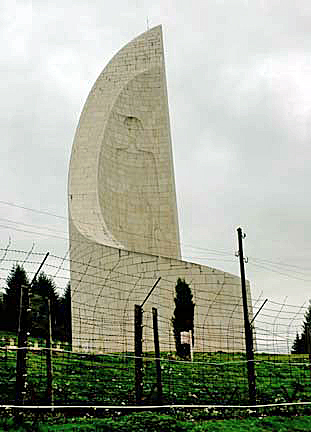
The monument at Natzweiler-Struthof is
called the Memorial of the Deportation. It was built to honor
the French resistance fighters who were deported after they were
captured while fighting against the German occupation after the
defeat of France in June 1940. In May 1964, the Memorial was
"dedicated to all the deportees, to perpetuate their memory,
and with it, their heroism and their martyrdom," in the
words of Dr. Leon Boutbein, one of the survivors.
The photo below shows the first view
of the former camp, as seen from the road that enters the Memorial
site. This view is looking eastward; the road to the village
of Natzwiller is behind the camera in this shot. The entrance
to the camp is on the left; the Memorial is outside the barbed
wire enclosure, set upon a hill above the camp.
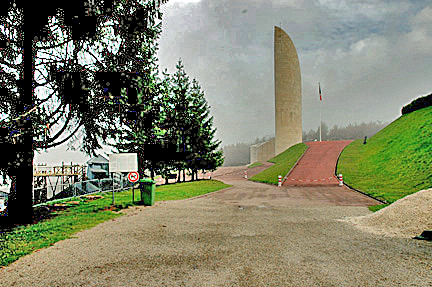
The photos below show the side of the
Memorial which faces the former camp. Inside the spiral is the
carved figure of a man. In the first photo below, the barbed
wire which surrounded the camp is shown in the foreground.
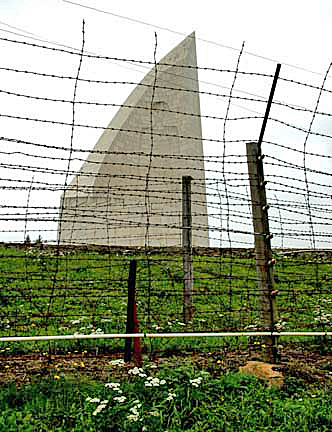
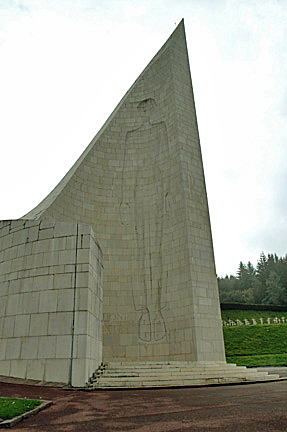
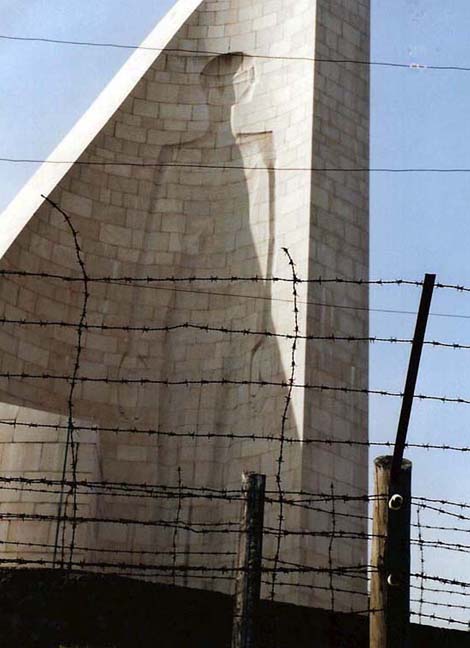
Photo Credit: Diane
Shaffer
In the words of Dr. Leon Boutbein, written
in 1954, when plans were made for the monument:
The Memorial will be the symbol of
the flame of the crematorium that united the victims in the same
sacrifice, and it will also recall a splendid spiral ascending
towards the infinite, the eternal hope that was in the heart
of every deportee. It was for the promise of a reconciled humanity
in a world happy and free that they accepted to die. [....] Yesterday
the heroism of the soldiers of Verdun was consecrated in Douaumont,
today it is in the supreme serenity of this marvelous mountain
haunted by the spirits of those who died, who were hanged, who
were shot, that our children will come to meditate and to honour
the civic heroism of the Partisans who suffered and who died
so that the love of freedom should remain the law of human beings.
The remains of the prisoners who died
at Natzweiler were brought back to the camp and buried beside
the Memorial in the National Cemetery of the Deportation. In
the foreground of the photo below, are the crosses that mark
their graves. Each cross has the name of a resistance fighter
who died as a martyr for France.
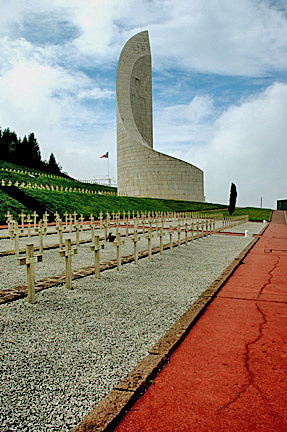
|